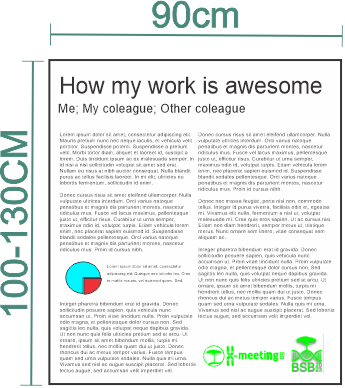You will find all of the information you need to submit your abstract here. Let's get this party started.
Key dates
Submissions are open until May 11, and the approval response is been send on demand
First choose one of the areas that best describe your work
-Proteins and Proteomics
Subjects: Structural and functional protein characterization, post-translational modifications and regulation. Protein interactions, functions, structures, expression and cellular activities. Computational models for the analysis of protein structure, dynamics, and function. Drug discovery using protein targets.
-RNA and transcriptomics
Subjects: Gene expression and profiling, splicing patterns, transcriptional and post-transcriptional regulation, transcriptional landscape analysis and metatranscriptomics. Structural and functional analysis of coding and non-coding RNAs, including computational models for the analysis of RNA structure, dynamics, and function.
-DNA and Genomics
Subjects: Gene structure and function, gene interactions, genome editing and transgenics, mutations and SNPs, genome-wide association studies, pan- and metagenomics and multiple genome comparison. Additionally, it also includes genome assembly and structural and functional annotation of genes.
- Systems Biology and Modeling
Subjects: Analysis of Biological Networks. Graph's theory application. Computational modeling of biological systems. Artificial Intelligence and Machine Learning using biological/health data. Data science. Epidemiological modeling and transmission dynamics.
- Database and Software Development
Subjects: Development of computational tools, application, and algorithms. Biological databases. Database integration.
- Phylogeny and Evolution
Subjects: Molecular Phylogenetics. Phylodynamics analysis. Evolutionary analyses of genes and proteins. Population genetics. Molecular Evolution. Coalescence studies.
- Education
Subjects: Educational applications of Bioinformatics and computational biology. Methods for developing biological data analysis skills. Development of Educational tools. Example cases of educational methodologies applied to bioinformatics learning.
Now read carefully all the Abstract Submission guidelines:
-
A maximum of two submissions is allowed per presenting author.
-
Abstracts are encouraged to be in English.
-
Abstracts must have between 250 and 500 words.
-
Abstracts must describe scientific data.
-
A brief description of preliminary results in the abstract is encouraged.
-
All authors' names, e-mails and institutions must be declared in the proper fields.
-
If all authors belong to the same institution, its name must be declared only once.
Please, DO NOT:
-
include names, e-mails, institutions and funding agencies in the abstract field.
-
include figures, tables or references in the abstract.
-
divide your abstract in sections.
-
include acknowledgements to individuals or funding agencies in the abstract. There is a specific field for funding information.
-
include advertisement material.
Now go to the submission system
After the poster committee has reviewed the abstract, it will be accepted on demand.
Printing limitations
 |
Please follow these sizing guidelines. The finished piece needs to be between 100 and 130 cm in height and 90 cm in width. Let your imagination run wild; there is no predefined layout. You may visit Official name and logo usage for more information and to download high resolution of the X-meeting art logo. All panels will have a light spot, but, it is better you bring with you some hang or fixing device. You may use this template made in TEX |
Photo by Simon Maage on Unsplash

